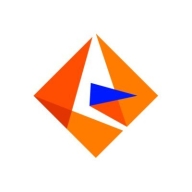

Informatica Intelligent Data Management Cloud and Cloudera Data Platform both compete in the data management and analytics sector. Informatica appears to have the edge with its advanced integration and data management capabilities, while Cloudera offers robust big data processing and open-source advantages.
Features: Informatica Intelligent Data Management Cloud excels with advanced module integration, flexible architecture, and comprehensive data management capabilities. It provides an easy-to-use, highly customizable cloud-based solution. Meanwhile, Cloudera Data Platform boasts powerful big data processing with scalable architecture and comprehensive cluster management through Ambari, suitable for large data volumes.
Room for Improvement: Informatica IDMC could improve its SAP integration, data stewardship, user interface, and debugging tools. On the other hand, Cloudera needs to enhance its cloud integration and security features while improving its governance tools and user interface.
Ease of Deployment and Customer Service: Informatica IDMC is versatile across numerous cloud environments, earning user satisfaction for its support, despite varying response times. Cloudera Data Platform, suitable for both on-premises and cloud deployments, is known for its challenging deployment but receives satisfactory feedback in terms of customer service.
Pricing and ROI: Informatica IDMC, although perceived as expensive, provides substantial ROI thanks to its robust data management features, albeit with a complex licensing model. Cloudera offers a more cost-effective solution using open-source technologies, though its pricing has become more complex, still ensuring significant long-term ROI.
In terms of return on investment, I see great changes in operational effectiveness measured by RTO when comparing on-premises solutions with cloud solutions.
A specific example of the positive impact of Cloudera Data Platform is the clearly saved time and improved performance, which is the main result of it.
We see return on investment from this solution in terms of time; time reduction or cost benefits is what we are getting very good results from.
I have communicated with technical support, and they are responsive and helpful.
Cloudera support is timely and responsive, adhering to the SLAs they provide.
Having a common chat channel between firms and service providers would make communication faster and more efficient.
Due to the tool's maturity limitations, solutions are not always simple and often require workarounds.
The response time is pretty good because we have someone in-house, who is an expert from Informatica, in our team who can help us with any sort of queries usually.
If they are unsure how to resolve an issue, they keep customers informed, providing updates about progress and ensuring communication with the product team to deliver accurate responses.
CDP allows for easy, mostly automated scalability where I can schedule job workflows, fine-tune system resource metrics, and add nodes with just a click.
Integration with other tools works well for us and we successfully scaled the solution after two to three years without any issues.
We periodically have requirements to add resources or servers, and we find it very useful from a scalability perspective.
As a SaaS platform, IDMC is quite scalable and provides complete flexibility.
I find Informatica Intelligent Data Management Cloud (IDMC) to be a sustainable and scalable solution.
Sometimes the end user is not experienced or does not have all the expertise related to Cloudera specifically, making it very difficult to manage properly
Sometimes a node goes down, but it automatically returns to a healthy state.
Cloudera Data Platform is stable functionality-wise, but it needs some bug fixes for security.
Stability is crucial because IDMC holds business-critical data, and it needs to be available all the time for business users.
We aim to address these issues with a Kubernetes-based platform that will simplify the task of upgrading services.
Cloudera Data Platform should include additional capabilities and features similar to those offered by other data management solutions like Azure and Databricks.
Cloudera Data Platform can be improved by addressing the feasibility of using it in the cloud; there are some complexities around the components used in cloud by Cloudera Data Platform that are not really convenient.
The tool needs to mature in terms of category-specific attributes or dynamic attributes.
I also want to see integration with other Informatica products, such as IICS, to leverage the metadata from EDC.
The licenses are too expensive compared to before, which is why customers are now preferring other data metadata management tools like OneTrust, Collibra, and Azure Purview.
Initially, CDH had a straightforward pricing model based on nodes, but CDP includes factors like processors, cores, terabytes, and drives, making it difficult to calculate costs.
We find Cloudera Data Platform to be cost-effective.
It ranges from a quarter million to a couple of million a year.
The licenses are too expensive compared to before, which is why customers are now preferring other data metadata management tools like OneTrust, Collibra, and Azure Purview.
I think the costs are reasonable for the kinds of features that Informatica Intelligent Data Management Cloud (IDMC) has.
By using the Hadoop File System for distributed storage, we have 1.5 petabytes of physical storage with 500 terabytes of effective storage due to a replication factor of three.
The Ranger integration makes it more flexible and reliable for me by allowing control over data access, specifying who can access at what level, such as table level, masking, or data layer level.
What stands out the most in Cloudera Manager are SDX, which provide centralized control for governance, security, and data lineage across multiple sources.
The platform's ability to pull in data from other platforms without the need for an additional integration tool enhances its appeal.
Informatica Intelligent Data Management Cloud (IDMC) can connect to pretty much any application, including Oracle Analytics and Power BI, and it works quite seamlessly.
In on-premise, we call it EDC for metadata management, while in cloud-based technologies, it is known as the Metadata Command Center, which serves the same purpose as EDC concerning CDGC.
| Product | Market Share (%) |
|---|---|
| Informatica Intelligent Data Management Cloud (IDMC) | 14.1% |
| Cloudera Data Platform | 6.2% |
| Other | 79.7% |


| Company Size | Count |
|---|---|
| Small Business | 8 |
| Midsize Enterprise | 6 |
| Large Enterprise | 23 |
| Company Size | Count |
|---|---|
| Small Business | 42 |
| Midsize Enterprise | 24 |
| Large Enterprise | 134 |
Cloudera Data Platform offers a powerful fusion of Hadoop technology and user-centric tools, enabling seamless scalability and open-source flexibility. It supports large-scale data operations with tools like Ranger and Cloudera Data Science Workbench, offering efficient cluster management and containerization capabilities.
Designed to support extensive data needs, Cloudera Data Platform encompasses a comprehensive Hadoop stack, which includes HDFS, Hive, and Spark. Its integration with Ambari provides user-friendliness in management and configuration. Despite its strengths in scalability and security, Cloudera Data Platform requires enhancements in multi-tenant implementation, governance, and UI, while attribute-level encryption and better HDFS namenode support are also needed. Stability, especially regarding the Hue UI, financial costs, and disaster recovery are notable challenges. Additionally, integration with cloud storage and deployment methods could be more intuitive to enhance user experience, along with more effective support and community engagement.
What are the key features?Cloudera Data Platform is implemented extensively across industries like hospitality for data science activities, including managing historical data. Its adaptability extends to operational analytics for sectors like oil & gas, finance, and healthcare, often enhanced by Hortonworks Data Platform for data ingestion and analytics tasks.
Informatica Intelligent Data Management Cloud (IDMC) integrates data quality, governance, and integration with flexible architecture. It supports multiple domains and a data models repository, delivering AI-enhanced data management across cloud-native platforms.
IDMC provides seamless integration and governance capabilities that support diverse data environments. Its comprehensive suite includes customizable workflows, data profiling, and metadata management. AI features, a data marketplace, and performance scalability enhance data management. While its interface poses challenges, its robust matching and cloud-native integration facilities are essential for complex data ecosystems. Users employ IDMC for connecting systems, ensuring data quality, and supporting data compliance but seek better pre-built rules, services, and improved connectivity, especially with platforms like Salesforce. Licensing, cost, and added AI functionalities are areas for potential refinement.
What are the key features of IDMC?IDMC is implemented across industries for data integration, metadata management, and governance. Organizations use it to connect systems, migrate data to cloud environments, and maintain data quality. They manage master data and automate business processes, facilitating data lineage and ensuring compliance with privacy regulations.
We monitor all Data Management Platforms (DMP) reviews to prevent fraudulent reviews and keep review quality high. We do not post reviews by company employees or direct competitors. We validate each review for authenticity via cross-reference with LinkedIn, and personal follow-up with the reviewer when necessary.